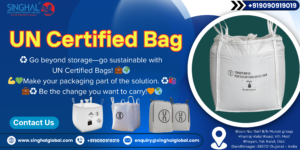Plastic sheets are formed into sophisticated three-dimensional objects using the vacuum forming technique, sometimes known as thermos-forming in the building and construction industries. The procedure begins with placing a single layer of plastic over a mold after it has been heated till it is flexible. The mold is then vacuumed out of the air, and the heated plastic is removed to form the appropriate shape. The final object is taken from the mold when the plastic is cooled and hardened. Vacuum-forming plastic sheets are a flexible and affordable alternative to standard injection molding, which may be overpriced and require more time for small production processes. The method is also effective for manufacturing big or sophisticated components, including those used in packaging, electronic fittings, and automotive pieces.
Different materials used in vacuum forming
In India, several different thermoplastic materials may be used for vacuum molding at reasonable prices on different websites. While choosing the material, the company & desired use must also be considered. Vacuum-forming is a common process for various plastics that involves clear vacuum-forming plastic sheets, such as polyester, polypropylene, HDPE, polystyrene, and polycarbonate. These plastics can process into any shape.
Polyester
Polyester is a type of polymer material renowned for its chemical stability, versatility, and recyclable properties. Common vacuum-formed polyester materials include beverage bottles, processed food packing, and boxes.
Polypropylene
Polypropylene is a form of thermoplastic polymer with strong mechanical durability that resists various chemicals, solvents, and bases. Moreover, it is elastic and heat stable. Yogurt jars, bottle tops and medicine bottles can all be made from them. In terms of global production, it ranks second among synthetic plastics.
HDPE
Polyethylene, often called high-density polyethylene (HDPE), is derived from petroleum. It has maximum strength proportion and elastic modulus. It has several ways of preventing solvents and is recyclable. Even though it is difficult to make, it is used for various things, including plastic packaging, plastic containers, food and beverage containers, and a box of cereal covers.
Polystyrene
A widely produced, reasonably priced plastic compound is high-impact polystyrene in general. It comes in two varieties: solid and foamed. A great example of foamed plastic is polystyrene. Polystyrene is commonly found in plastic utensils, CD covers, fast food plates and egg boxes. Even though polystyrene is easily available, it is widely known for being extremely challenging to dispose of in a more ecologically friendly way. It commonly becomes garbage and takes a very long time to decompose.
Polycarbonate
With exceptional durability and damage resistance, polycarbonate is a polymeric resin. It often has transparent properties and efficiently reflects light. It is also straightforward to thermoform while maintaining structural accuracy. Polycarbonate sheets may be thermoformed for various applications, including CDs and DVDs, bulletproof barricades, airplane surfaces, etc.
Applications for vacuum-forming plastic
Living in today culture without interacting with at least one vacuum-formed element throughout the day is extremely challenging. Vacuum-forming plastic sheets can be purchased at the best prices in India to mold into different elements according to the business
or individual requirements. This manufacturing process is used to produce several various parts in a variety of industries, including:
Packaging
Meals, gadgets, medical equipment, basic goods, and other things have packaging frequently made using vacuum forming. A detailed overview of the goods is made possible by vacuum-formed trays, containers, and clamshell packaging, which offer an efficient approach to showing and safeguarding items. Vacuum-formed packaging is versatile and economical since it can be modified to meet certain item dimensions and forms.
Thermoformed parts
Thermoformed elements can be produced by vacuum forming, which is widely used in different sectors such as medicine, automobiles and airplanes. The thermoformed elements can replace other parts or be customized for different sector applications.
Shielding equipment
One of the best uses of vacuum-formed plastic is its use in defensive equipment. This equipment involves head gears for motorcycles, sports gear and more. The procedure enables the fabrication of complex forms and patterns, enhancing the end product's
functionality and comfort. Many online sites offer vacuum-forming plastic sheets for sale, which can be used for safety equipment. Protective gear that has been vacuum-formed is portable, strong, and can be tailored to a user's particular requirements.
Playing elements
Several components and parts for games and hobby items, such as vehicle models, aircraft, and ships, are made from vacuum-formed plastic. This method may make complex forms and patterns for a reasonable amount of money.
Conclusion
Plastics may be vacuum formed in a technique that is inexpensive, simple to design, and quick to produce. Because tools are simpler to make, they are far less costly, and the production cycle is shorter. Injection molding takes more than twice as long to complete a
project. The technique is repeatable, and the result is durable and reliable. Using vacuum forming allows designers and engineers to explore new ideas and concepts. With all these benefits, a more affordable and long-lasting product may be produced quickly.








